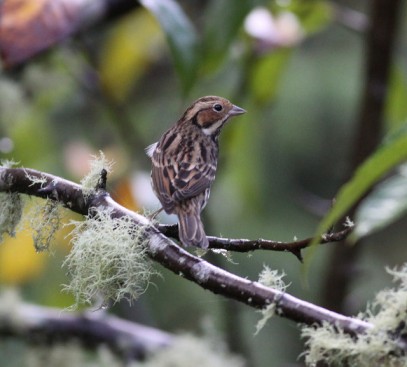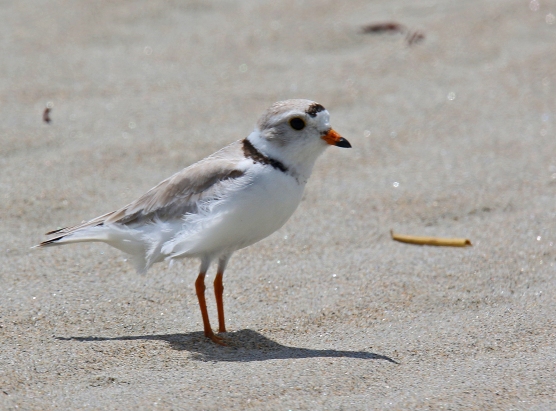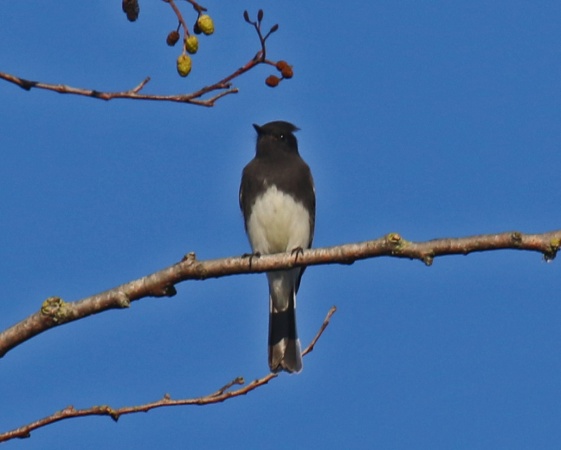Last Sunday I attended a wonderful birding event – a surprise 80th birthday party for Dennis Paulson. There is nobody in Washington who has done more good for the birding community than Dennis – his Master Birder Classes, his scholarly work, his curatorial work, his other teaching roles. There is probably nobody in Washington who knows more about birds than Dennis either. It would be great to do a blog (or two or three) about Dennis – but I am not sufficiently talented to do it right and as he would deserve so I will pass. At the party, turning the tables on the Master, Dennis was shown a number of photos of just parts of birds and challenged to identify them from the limited data. Not surprisingly Dennis got most of them right – an amazing performance. Since the birds were not limited to birds of Washington, Dennis asked “where was this taken” to aid his deliberations.
Dennis Paulson

With Dennis’s question in mind, on the long drive home from a fun trip to Neah Bay, I pondered a variation on the photo I.D. challenge: wondering if anyone could answer “where are we” when showed a combination of photos – adding that they were all from the same state and would have to be within some limited specified time – rather than just pick photos from a lifetime of possible surprising finds in an area. The original plan was to sort through my Ebird reports and come up with some possible challenging combinations. However, when I was later editing some recent photos on Flick’r, the task became easier. I could take the most recent 15 photos I have posted there, show them to a good well traveled birder – say from Missouri, tell him/her the photos were all from the same state and ask, “Where are we?”
Here is the list from the most recent photos backwards in time: Northern Pygmy Owl, Clay Colored Sparrow, Painted Bunting, Snowy Egret, Snowy Owl, Black Phoebe, White Winged Crossbill, Zone Tailed Hawk, Sharp Tailed Sandpiper, Northern Shrike, Barn Owl, Harlan’s Red Tailed Hawk, Yellow Bellied Sapsucker, and Bar Tailed Godwit. (I have omitted Western Meadowlark as it would immediately bring focus to the Western states).
So where are we? To even an intermediate level birder, a couple of the species jump out as probably geographic limiters. But in every state there are inexplicable anomalies, a first ever record of some species that just does not belong there. And there are some states – birding meccas like Texas, Arizona and California for example – which seem to have more than their share of such oddities. Black Phoebe, Northern Pygmy Owl and Zone Tailed Hawk all point to Western states – but just how far west? And what about those anomalies? I found for example that a Zone Tailed Hawk showed up in Massachusetts within the 10 year time frame.
I did some research on Ebird and examined species lists for a number of “likely” states over the past ten years to see where such a list might be possible. I concentrated on California, Oregon, Washington, Arizona, Texas, New York, Colorado (which always surprises me with its species diversity and records) and Massachusetts.
Since they are my photos, we already know that all of these species have been found in Washington, but I would not have presented the material to that representative Missouri Birder that way, so he/she would have to piece it together species by species. I would have given him/her the 8 “possible” states and with that the analysis may have gone this way.
All of the states would have had Red Tailed Hawks (although I am not sure about the Harlan’s form), Northern Shrikes, Barn Owls and probably Clay Colored Sparrows.
Red Tailed Hawk (Dark Phase Harlan’s) – Skagit County, Washington – October 24, 2017

Northern Shrike – Wiley Slough, Skagit County Washington – October 31, 2017

Barn Owl – Three Crabs, Clallam County, Washington – October 24, 2017

Clay Colored Sparrow – Neah Bay, Clallam County, Washington – November 20, 2017

Massachusetts – yes there was that Zone Tailed Hawk, but the other western species – Northern Pygmy Owl and Black Phoebe have not made it to the Bay State. The same holds for New York. Interestingly both had Bar Tailed Godwits – missing as we will see for some of the others.
Black Phoebe – Wiley Slough, Skagit County Washington – October 31, 2017

Northern Pygmy Owl – Chinook Bend, King County Washington – November 21, 2017

So Massachusetts and New York are out. How about Colorado? It too has a record of a Zone Tailed Hawk and it has both the Black Phoebe and the Northern Pygmy Owl, but despite having more shorebird records than I would have expected, neither a Bar Tailed Godwit nor a Sharp Tailed Sandpiper have shown up there in the past 10 years.
Bar Tailed Godwit – Westport Marina – Grays Harbor County Washington – September 21, 2017

Sharp Tailed Sandpiper – Hayton Reserve – Skagit County Washington – October 31, 2017

So Colorado is out as well. Next up for consideration is Texas. Yes for everything – except once again the Sharp Tailed Sandpiper. Close but no cigar. Since shorebirds are not its specialty, I expected that Arizona would fail also. And it did – no Sharp Tailed Sandpiper and also no Snowy Owl (which had been seen in all of the other states above.)
Snowy Owl – Sandy Point – Whatcom County Washington – November 8, 2017

Running out of options, our Missouri birder would now have to consider the three West Coast states. California seemed the most likely bet. In fact with its 636 species seen in the past 10 years – more than any other state, it was the best guess even from the start. Again close but no cigar as just like Texas, one species was missing. And this was a surprise. Unless Ebird was in error (or there was user error), no White Winged Crossbills were reported in California from 2007 through 2017.
White Winged Crossbill – Neah Bay, Clallam County, Washington – November 6, 2017

California was out. How about Oregon? Once again, off by one. No Zone Tailed Hawk has made it to Oregon in the past ten years. All the others yes but one miss.
Zone Tailed Hawk – Neah Bay, Clallam County, Washington – November 6, 2017

So that left only Washington – but how could that be? Not only did it seem impossible that there would have been a Zone Tailed Hawk, but some of the other species were also not likely there. A Snowy Egret? – well maybe. A Painted Bunting? – not so likely. And even the Yellow Bellied Sapsucker should not be found there. Yet as it turned out, as we know, all were.
Snowy Egret – Lower River Road, Clark County, Washington – November 18, 2017

Painted Bunting – LaConner, Skagit County, Washington – November 19, 2017

Yellow Bellied Sapsucker – Juanita Bay Park, King County Washington – September 22, 2017

Indeed Washington is the only state to have had all of these species in the past ten years – but way more impressive and rare than that is that all of these species have been seen (and obviously photographed) in Washington – indeed Western Washington in the past two months. Our Missouri birder would have been very surprised. I wonder how Dennis Paulson would have done…
This chart shows the birds seen (and not) over the past ten years in our option states. It also gives the total number of species seen in each state over that period. (Source Ebird)
| WA | OR | CA | NY | AZ | CO | TX | MA | |
| Total Species Reported | 464 | 484 | 636 | 444 | 532 | 467 | 610 | 447 |
| Snowy Egret | x | x | x | x | x | x | x | x |
| Red-tailed Hawk | x | x | x | x | x | x | x | x |
| Zone Tailed Hawk | x | x | x | x | x | x | ||
| Bar-tailed Godwit | x | x | x | x | x | x | ||
| Sharp-tailed Sandpiper | x | x | x | x | x | |||
| Barn Owl | x | x | x | x | x | x | x | x |
| Snowy Owl | x | x | x | x | x | x | x | |
| Northern Pygmy-Owl | x | x | x | x | x | x | ||
| Yellow-bellied Sapsucker | x | x | x | x | x | x | x | x |
| Black Phoebe | x | x | x | x | x | x | ||
| Northern Shrike | x | x | x | x | x | x | x | x |
| Clay-colored Sparrow | x | x | x | x | x | x | x | x |
| Painted Bunting | x | x | x | x | x | x | x | x |
| White-winged Crossbill | x | x | x | x | x | x | x |








































































